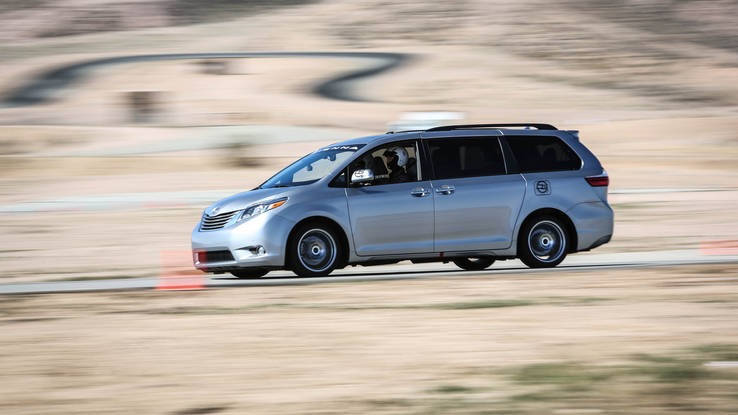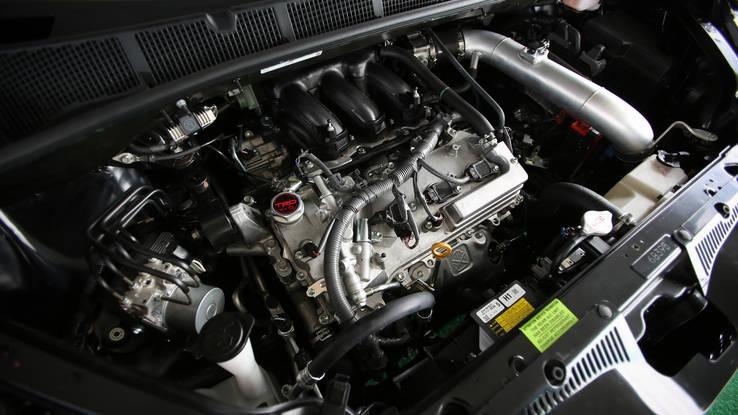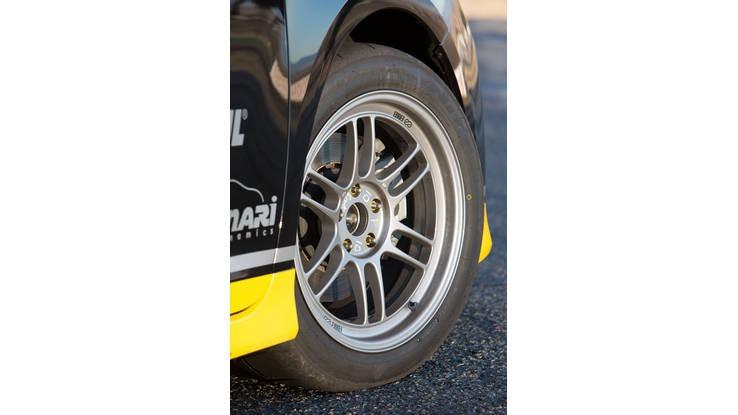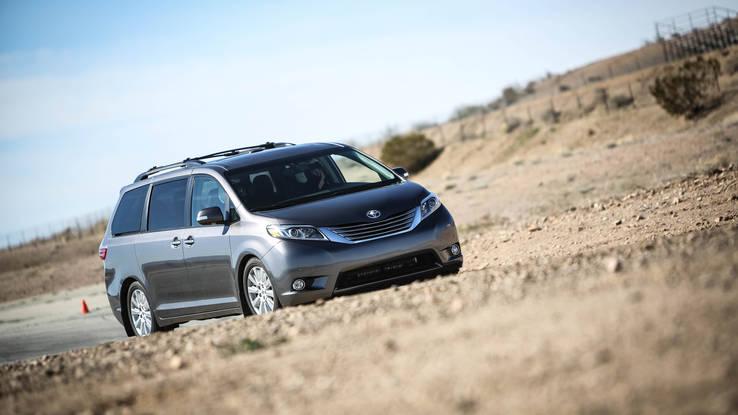Toyota Sienna R-Tuned and S-Tuned concepts make short work of the Streets of Willow
It’s easy to dislike minivans. They’re a little goofy and a little boring … plus your mom drove one. Your mom! But with a little wrenching (OK, a lot of wrenching), could the average kid shuttle be developed into something … fun?
Toyota’s research told them that a chunk of buyers would buy minivans if they were sportier. So when the Sienna was redesigned in 2011, Toyota introduced an SE trim with more aggressive styling and a slightly firmer suspension. It proved successful, and the popularity of the SE trim helped nurture a mini-trend of custom minivans.
Vankulture, a modern-day custom van group, has 51,000 Instagram followers around the world. And the Sienna SE is one of the core vehicles that members modify with slammed air suspensions, aggressive bodywork and custom interiors.
“We started meeting up in a forum and eventually found that we all had a common interest — we all wanted to modify our vans,” says co-founder of Vankulture and Sienna owner Paul Cotaco. “We all want something more than just a family hauler, we want something that will identify us as individuals.” Vankulture members, many of whom have decade-long roots in the sport compact world, might be the hardcore fringes of modern-day custom vanning. But Toyota is listening to them.

Toyota Sienna R-Tuned and S Tuned Concepts
Last year, 10 percent of the 130,000 vans Toyota sold in the U.S. were SE models. And Toyota thinks there is a market for more.
“Some customers are interested in even more performance,” says Sienna chief engineer Andrew Lund. “What’s clear is that a sport van has to look sporty. And the dynamic performance has to match — it has to be balanced.”
To show us just how extreme a Sienna could be, Toyota brought us to the Streets of Willow track at Willow Springs Raceway in Rosamond, California, and let us sample both the track-focused Sienna R-Tuned (introduced at the SEMA show last November) and the more real-world S-Tuned Concept. Dan Gardner and his shop DG-Spec, a firm that campaigned a national championship-winning Scion tC in World Challenge Touring Car, modified both vehicles. It doesn’t take long to realize that these two very special vans were not only developed to perform on the track but also built with obsessive attention to detail.

Toyota Sienna R-Tuned and S Tuned Concepts
R-Tuned Sienna
The R-Tuned Concept is the more aggressive build, designed to be a serious contender on a sports-car road course. Yes, this van was built to be a track-day weapon. Yet DG-Spec says the R-Tuned is still very streetable. In fact, during the hundreds of hours testing this van, the team drove the Sienna from their Long Beach, CA, shop up to Willow Springs — more than 200 miles round trip. And that was possible in part because they retained the stock 3.5-liter V6 and six-speed automatic. Under the 40-pound-lighter carbon fiber hood, that V6 inhales though an improved intake, sucking cold air from just in front of the driver’s side front tire and exhales through a 3-inch custom cat-back exhaust. DG says these modifications bump power by around 40 hp, to just over 300.
And that level of power isn’t too bad when you consider the van has 800 fewer pounds to haul around. DG Spec basically gutted the van aft the front seats, bringing the curb weight down to 3,800 pounds. The team did retain the factory dash and related hardware, so there’s a functioning glove box, climate control system and even Toyota’s Entune infotainment system. But one look at the two deeply bolstered Corbeau Pro Series racing seats, the six-point harnesses and the stout roll cage and it’s clear this is one serious performance machine.
Perhaps the most impressive thing about the R-Tuned is how many of the stock parts were either retained, or modified with small, smart details. After all, the performance aftermarket for the Sienna minivan is nonexistent, so there was no blueprint to follow. The front suspension is 1.5-inches lower and now uses fully adjustable DG-Spec/MCS coilovers with a spring rate something like 300 percent over stock. Camber and caster plates were adapted from products made for an Australian-market Celica — to maximize the tire’s contact patch on the track. Speaking of the tires, DG uses wide 275/40R18 Nitto NT-01 tires wrapped around massive 18×10-inch Enkei wheels up front. A 4mm spacer is used here to match the spacer that was needed in the rear of the van; that keeps the front and rear tracks square. Even with rubber this large, DG was able to retain the all the stock fender liners. The rest of the suspension system, including the swaybar, all the bushings and steering gear were left completely stock.

Toyota Sienna R-Tuned and S Tuned Concepts
To channel the power to the track, DG helped develop the world’s first minivan limited-slip differential. That required sending the entire transaxle to Japan. The resulting aftermarket clutch-type diff, DG says, really damps down the understeer and wheelspin. Interestingly, if this diff were put into production it could also theoretically work in other front drive V6-powered Toyota vehicles like the Camry and Highlander.
Surprisingly, DG found that most of the stock Sienna’s brake system was up to the task of handling track work. However the stock pads were upgraded with Carbotech racing pads (rated for temperatures north of 1800 degrees) and use stainless steel brake lines, race fluid and a special heat reflecting gold foil wrap. That last one is important, Gardner says, to keep parts like the plastic wheel speed sensor and related hardware (crucial for ABS brake operation) from melting.
At the rear, the team retained the factory twist-beam axle but replaced the factory springs with a custom-built adjustable setup and new dampers too. In place of the large diameter stock springs, DG fabricated an adjustable perch to house smaller, firmer Vogtland racing springs. The rear suspension also uses custom-valved dampers and can be raised or lowered within a 3-inch range. The ability to adjust the suspension at each wheel means the team can corner-balance the chassis for optimal handling. Like the front, the stock brakes were used in the rear with the exception of racing pads, heat shielding and stainless steel lines.
Vehicles developed for track use rarely (OK never) have to contend with a sliding rear door. But DG wanted to keep the doors a functional element of the build. So a 4mm spacer to clear the suspension combined with a slightly narrower 18×9-inch wheel wrapped with the same 275/40R18 tires just cleared the doors.
Sienna S-Tuned
The Sienna S-Tuned is a far milder build. But this van is also more representative of what Toyota could eventually deliver as a sport package for the next-generation Sienna.
“What we think we’ve accomplished is amplified the best of what the Sienna already had,” says Gardner. The S-Tuned began as a heavier Sienna Limited AWD model. And the team retained the stock interior — so it weighs the same as a stock model. The front and rear suspensions were lowered about 1.3 inches and fitted with springs that are about 40 percent firmer than stock paired with stock dampers from an SE model. A cat-back exhaust and freer-breathing filter element bump horsepower here by about 10. The stock brakes now use street-spec Carbotech pads and are capped by 18×8.5-inch Enkei wheels and 245/40R18 Nitto NT-05 tires.

Toyota Sienna R-Tuned and S Tuned Concepts
What are they like to drive?
Driving a minivan around a racetrack sounds silly. Really silly. That is, until you realize that DG Spec’s data logger clocked their R-Tuned van around the Streets of Willow in 1:27. That’s a full 15 seconds a lap quicker than a stock Sienna SE. But it’s also about a second faster than their driver could muster in a Camaro SS. So with this particular driver at the helm of both vehicles, the V6 minivan is quicker than a V8 Camaro with more than 400 hp. Let that sink in for a moment.
Even though the seats are approximately the same height as the stockers, the fat bolsters of the Corbeaus and the bare metal floor make gracefully climbing into the R-Tuned a challenge. But once belted in, it’s supremely comfy. And because this is a van, there’s a ton of headroom above our helmet. There’s enough room even for chief engineer Lund, who measures 6 feet, 4 inches, to comfortably clear the ceiling. The new exhaust is loud and sounds raspy — like it belongs to some king size sport compact car. Despite the weight loss and the increased power, the R-tuned doesn’t feel exponentially quicker off the line. But all that changes in the bends. The R-Tuned charges into a corner and sticks so well, it’s actually a little shocking. You shouldn’t be able to enter a corner as quickly as you can in this Sienna. But the R-Tuned holds onto the track and feels completely at home here. That’s the brain twister. By comparison, a stock Sienna is so ponderous you quickly give up trying to drive it hard. Though the steering system is stock in the R-Tuned, it feels sharper and more precise.

Toyota Sienna R-Tuned and S Tuned Concepts
That said; keep the transmission in its manual mode the entire time. When left to shift for itself, the powertrain is constantly hunting to keep up with the capability of the chassis. In reality, this R-Tuned could use a powertrain that better matches the suspension. But still, this is easily the best handling minivan we’ve ever driven — and certainly the most fun, too.
The milder S-tuned van is in some ways more impressive. Sure, it’s way slower around the track than the serious R-Tuned. There’s obviously less grip here too, but there’s still plenty of capability to carry serious speed around the Streets of Willow. The S-Tuned feels planted and balanced with just enough body roll to let you know you’re getting near the limit of what it can do. And strangely, even though no weight has been removed, it feels lighter and more agile than a stock Sienna. The chassis capability here is a far closer match to the powertrain, so there’s less hunting from the transmission. Even at this much milder level of development, DG was able to shave 8 seconds off the lap time of a stock Sienna.
On the street, the S-Tuned is noticeably firmer than a stock Sienna, much of that probably from the 40-series tires. Yet, it’s not so stiff that we’d mind driving this van every day on our morning commute. A package like this would be great for a family road trip because this minivan could probably keep pace with any midsize sedan.

Toyota Sienna R-Tuned and S Tuned Concepts
Will they build a real performance van?
Toyota is serious about producing a sporty minivan above today’s SE model. They’ve reportedly put around 300 Toyota employees globally through a drive program with these two vans. They’ve focus-grouped van enthusiasts like Cotaco. And chief engineer Lund is excited about the possibility. “I think we’re going to go a little bit bolder, a little more sporty, in the future,” he says. One of the biggest hurdles, Lund says, is that the minivan market is more price-sensitive than other segments. So that will likely limit just how many expensive performance parts can be fitted to the next Sienna.
Still, after our experience at with these modified vans, we’re excited to see what Toyota comes up with next.




























